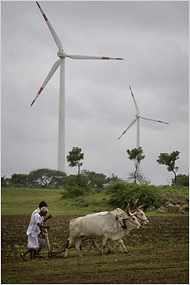
 While many companies are still try to figure out what their CSR strategy is (or in some cases, what CSR is period), lumber and paper giant Weyerhaeuser has recently issued its 2009 Sustainability Report.
While many companies are still try to figure out what their CSR strategy is (or in some cases, what CSR is period), lumber and paper giant Weyerhaeuser has recently issued its 2009 Sustainability Report.
Weyerhaeuser was an early adopter of the voluntary Global Reporting Initiative (GRI) report. The company started publishing a report of their environmental impact in 1993, well before GRI came along. Seems like a reasonable effort for a company that could scarcely have a more direct impact on the environment. Regardless of the company’s CO2 output, a business based on cutting down trees and processing lumber should be wary of this issue.
While GRI Sustainability Reporting Guidelines began in 1997 as the Ceres Principles and has been altered along the way, Weyerhaeuser has been with the organization more or less every step of the way. In 2002, the company began to incorporate their environmental reporting into a greater analysis, which included economic and social issues and brought them in line with the GRI guidelines. Since this time, Weyerhaeuser has published the voluntary reports each year with generally impressive results that have been verified by GRI. In 2007, the first year the results were published online, the company scored an A under the G3 reporting framework. This year the score was the same. The quality of reports is based on the 6 measures, reliability, clarity, balance, comparability, accuracy and timeliness.
Where is the company succeeding? According to the report, Weyerhaeuser is on target to cut greenhouse gas emissions by 40% in 2020, has reduced water usage 12.5% since 2007 on the way to cutting usage by 20% in 2012 and has improved its safety record over the previous year.
The argument can and is made that GRI reporting is voluntary with companies reporting as much or as little information as they would like, much of which is not verified by outside sources, but investors and consumers should receive some credit. It’s not hard to tell the difference between a marketing campaign and a company that understands the value of tracking and publishing sustainability metrics.
Image Credit by Claire L. Evans via Flickr under a CC license




